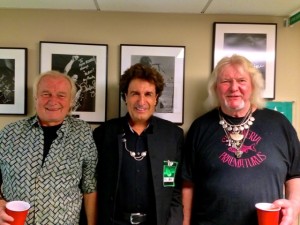Patrick Moraz:
Born in Switzerland, Patrick Moraz began studies in violin and piano as a young child. His serious commitment to piano really began when he had the opportunity (because they were living in the same house in Vevey, Switzerland) to intently watch and listen to Clara Haskil the great Romanian concert pianist who was one of the world’s leading authorities on the music of Mozart, Shubert, Bach and Beethoven. Later, while attending the Conservatory of Lausanne he studied Harmony and Counterpoint, (the Art of the Fugue), with, amongst other music celebrities, Nadia Boulanger, to name but a few. At age nine, by the sheer fact that his father was managing multiplex restaurants which included generally theaters and various stages, Patrick had already met such luminaries as Bourvil, the comic French movie star, Louis Armstrong, Maurice Chevalier, to name but a few. Later on, he met John Lewis, from the Modern Jazz Quartet, from whom he got a few music lessons, Lionel Hampton, Count Basie and even Duke Ellington. It’s only later on that he had the pleasure and privilege to meet and be around Salvador Dali and his wife Gala, while living near Cadaques, in the North of Spain.
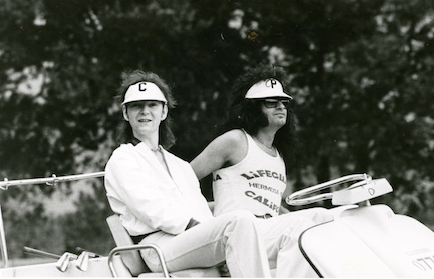
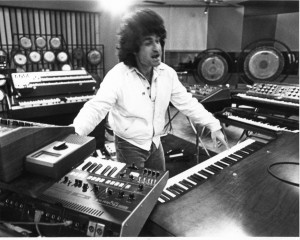
At the age of sixteen, Patrick gained attention as the youngest person to ever win the prestigious “Best Soloist Award” at the Zurich Jazz Festival. A few years later, with his quartet, he was opening concerts in Europe for “Jazz Great”, John Coltrane. In November 1964 Patrick went to England in order to start learning English. He was offered a job working as an au-pair cook for a school in the south of England which supplied room- and- board and a meager salary of £2.88. During this period Patrick had found a gig playing in a local pub and also in a tearoom to supplement his income. One day, he was ousted by the Secretary of the Local Musicians Union Branch and two “Bobbies” and from there, escorted out of the country. Not to be defeated a week later he was back in England after taking a boat from France. A few months later the same thing happened again while Patrick was playing for a church. Determined to finish his language studies Patrick returned to England yet again, and was able to pass with flying colors the proficiency for English from Cambridge University.
From the mid- sixties on Patrick’s work assignments and musical performances had him traveling extensively throughout Switzerland and Europe and in the mid sixties he added India, Africa and the Middle East to his journeys. In 1968 Patrick decided to become a full time professional musician. While advancing his studies with such notables as Pierre Boulez, Stockhausen and Xenakis, as part of Geneva’s Studio de Musique Contemporaine, he began to do film scores. His first score was for a movie entitled “Les vieilles Lunes”, commissionned by film-director Daniel Fahri, who later on, started with his brother 2 famous jazz-clubs in Paris and Geneva. Then, Patrick scored and recorded with his own group the music for “La Salamandre” and “Le milieu du Monde”, by Director Alain Tanner. During this time he also went on to form, along with good friend (bassist) Jean Ristori, the revolutionary rock-band “MAINHORSE”. The group recorded their first and only album “Mainhorse” on Polydor Records and they toured throughout Western Europe, and England. When the group disbanded at the beginning of 1972 Moraz and Ristori toured Japan and the Far East with a Brazilian Ballet Company for the better part of that year. Furthering their Far-Eastern explorations, they lived and worked also in Hong-Kong, appearing on Chinese Television under the name of “The Patrick Moraz Quartet” which included also 2 additional South-American percussionists. Upon their return to Switzerland,
Patrick scored, with the help of his friend and mentor, world famous organist Guy Bovet, the soundtrack for the movie “L’ Invitation”, by Director Claude Goretta, which won the prestigious “Grand Prix du Jury” (the most coveted award aside from the “Palme d’ Or”) at the 1973 Cannes Film Festival. Directly after that Patrick scored another movie for the same director Claude Goretta, “Pas si mechant que ça” starring the two of the most important filmstars of France at the time, Gerard Depardieu and Marlène Jobert. Other movie scores followed during the next twenty years. Patrick moved to London in the spring of 1973 and formed the Rock Trio “REFUGEE” with two English musicians he had met a few years earlier, Lee Jackson and Brian Davison, both former members of “The Nice”. Rising to international fame in 1973-1974, “Refugee” split up after their first and only successful tour of England and Europe and their critically acclaimed eponymous LP-Album of the same name.
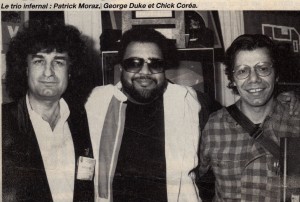

In August of 1974 Patrick Moraz was invited to become the keyboardist and member of one of the biggest rock bands in the world: “YES”. Patrick proved to be quite at home in this most complex period in YES’s evolution and in fact after only a few weeks of recording and rehearsing, provided his musical creative input to what many fans consider to be the band’s pinnacle of artistic creativity…the album “Relayer”. During the “Relayer Tour”, the group performed virtually non-stop, worldwide, for the next three years. In 1976 during America’s bi-centennial year of celebrations many of YES’s audiences numbered in the tens of thousands, with the largest audience to date for YES, reaching a number of 135,000 at JFK Stadium in Philadelphia on June 12th. During breaks from band work, all of the members of YES recorded their own solo albums.
Patrick’s first solo album was the visionary “i” (a.k.a. “The Story of i”) which was released in 1976 by Atlantic Records and won the highest place in the Polls which awarded him the very prestigious “Best Keyboard Album of the Year”, by Keyboard Magazine. That same year, Patrick also won the 1st place in that Poll, with the coveted title of “Best New Talent”. The very accomplished musicians Patrick chose to work and play with on his album were Jeff Berlin, (bass), Alphonse Mouzon (drums), Ray Gomez (guitar), Andy Newmark (drums), as well as 16 of the top Brazilian percussionists, having recorded the original tracks with them in Rio-de Janeiro at the beginning of 1975. In addition to all the instrumental music and French lyrics that Patrick composed and performed for the album, he chose, as lead singer for the project, the English singer and lyricist John McBurnie, who wrote the lyrics to the music of the three English songs that Moraz had originally composed the music of, with additional backing vocals by Vivienne McAuliffe. In the spring of 1977 after the recording of “Out In The Sun” Patrick moved to Brazil and learned the native musical languages and idioms of this most exotic land. During previous visits to the country Patrick had built a unique band of sixteen percussionists. For over two years, the group recorded at numerous recording studios and performed at festivals and concerts, mainly throughout the Latin American Nations.
Moraz was engaged by the Moody Blues in 1978 to take part in a promotional World Tour for their comeback album “Octave”. Patrick was made a full time member of the Moody Blues in 1980, during the recording of “Long Distance Voyager” which went on to become #1 in “Billboard”, “Cashbox” and across the board in US and Canadian charts, reaching worldwide sales of over 11 million albums. In addition to circling the globe and performing with the Moodies,
Patrick was giving concerts with his own band from Brazil. Invited by Claude Nobs, the visionary founder of the world-famous Montreux Jazz Festival, to play at the Montreux and Sao Paolo Jazz Festivals, he met jazz greats George Duke, Stan Getz and Chick Corea, with whom he worked with on two albums, along with French bass virtuoso Bunny Brunel whom he had introduced previously in England to Chick. Patrick also continued to record his solo albums during this period including the revolutionary “Future Memories1” in 1979 and “Future Memories ll” in1982 which were chosen to represent Switzerland at the Montreux Golden Rose Festival. They were both spontaneously composed and broadcast live on television throughout Europe. Late in 1979, Moraz recorded a series of original works based on musical idioms, with the pan pipe virtuoso Simon “Syrinx” Stanciu resulting with the album “Co-Existence” which was later re-released as “Libertate”, and to provide some funding for a Charity Organization in favor of the children of Romania, after the 1989 Revolution. This marriage of musical styles symbolically “erased” cultural boundaries, blending the ancient, melodic tones of the panpipe wooden flute with modern day synthesizers, electronic keyboards, acoustic piano, ethnic percussions and rock instruments. After this extraordinary, once again “ahead-of-its-time” venture,
Patrick continued to work as a member of “The Moody Blues” and also to record and perform as a solo artist, collaborating with fellow YES alumnus Bill Bruford, on two acclaimed albums, “Music for Piano and Drums” and “Flags”. He also recorded with bass virtuoso Bunny Brunel and guitarist Kazumi Watanabe on different solo projects of each, including some tracks for the up-&-coming “Change of Space”, which was eventually released later in the year 2009. Patrick left “The Moody Blues” in 1991 to pursue a career as a solo artist. In 1994 he released his 9th solo album, his piano solo debut “Windows of Time”. Robert Doerschuk of Keyboard Magazine hailed it as a monumental work saying: “If Beethoven had gigged with YES, he might have wound up sounding like this”! Patrick’s 1995 “Coming Home America Tour”, better known as “CHAT”, may well be one of the most unique and courageous undertakings yet, in an illustrious career marked by innovation. In his determination to bring artist and audience closer together, in order to truly share the emotional intensity that is the creative acoustic experience, Patrick took it upon himself to go directly to his public by offering private and semi-private bookings via the Internet. The response was immediate and enthusiastic leading to an equally successful “CHAT ll” tour.
In 2001 Patrick was commissioned to write an hour of music for a large symphony orchestra in France. It took him nine months and the work was performed and broadcast live on French speaking television for the Miss France contest on channels all over the world at the end of that year. Apart from composing extensively at the Audio Playground Synthesizer Museum and Studios in Orlando, FL, to where he was invited to work at by the owners themselves, at that time, Joseph and Michelle Rivers. Since 1998, Patrick also released two new works for piano: “Resonance”, released in 2000, and “ESP” (Etudes-Sonatas-Preludes) released in September of 2003. Since then, Patrick Moraz continued to compose, record and develop various musical and artistic projects.
In and around 2005, Patrick met the visionary Music aficionado and entrepreneur from England who took it upon himself to have a very important roster of artists works released and re-released worldwide through his own distribution company “Voice Print Records”, recently re-named “Gonzo Multimedia”. These artists, including Patrick Moraz, came from the very fabric which made the musical History of the 60s, 70s, 80s, 90s and of the 21st Century so vibrant and interesting. Aided by a very efficient team, Voiceprint Records found the way to have all these “gems” reprised and manufactured in the best way possible, thus prolongating the lives, not only of the products, but of the artists themselves. Since 2006, he has remastered twenty CD’s and two DVD’s.
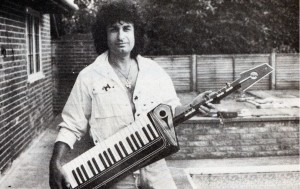
In 2009 Patrick released his latest CD to date, “Change of Space” which is a collection of songs and instrumental pieces of “never-released material” which Patrick worked on, composing, recording, mixing and “polishing” over a period spanning a time-frame betwwen 1989 and 2003. These pieces reflect very much some of the music he composed and developed over the years and recorded on his own as well as with other remarkable musicians and engineers. In 2009, the recordings of the work, under the name of “Change of Space”were mastered byJean Ristori at MTX Mastering Studios inSwitzerland. Some of the great musicians who are featured on this album are: Bunny Brunel (bass), John Wackerman (drums), Kazumi Watanabe (Electric guitar), Alex Acuna (Perc.) Alex Ligertwood (lead vocals), Don Adey (lead vocals), Janis Liebhart (backing vocals), Ronnie Ciago (drums), Michael Tovar (rhythm. Guitar).
In 2012 Patrick released three entirely new CDs which are: a live Moraz-Bruford double CD recording of a concert in Maryland, a new solo piano CD entitled “PianissiMoraz” and the brand new “Moraz Live at Abbey Road”, which was completely performed and recorded live, entirely on his own in 1987, at the famous Beatles Abbey Road Studio #2, London, England. Patrick is also still working in the preparation of his up and coming new studio CD: “A W A Y T O F R E E D O M” During the last few years, in addition to various participations in the recording of some very interesting but complex “Tribute Album” in the company of producers and musicians Billy Sherwood, Alan Parsons, Chris Squire, Steve Stevens and Alan White.
Currently, in 2013, Patrick Moraz has been invited to take part in the “Cruise to the Edge 2014” or “CTTE”., from April 7th to 12th 2014. Though described as “The Prog-Rock Music Festival Event of the Century at Sea”, During his most recent interview, Moraz calls it: “A real Journey through Space & Time”, on one of the newest and most prestigious ships of the MSC Cruise-Line: The “Divina”! www.cruisetotheedge.com-theartists. And, some of the the latest great News: YES, which Patrick Moraz was a member of during the Mid-Seventies, has been nominated for the potential induction, in 2014, in the “Rock-&-Roll Hall of Fame! https://www.facebook.com/cruisetotheedge
